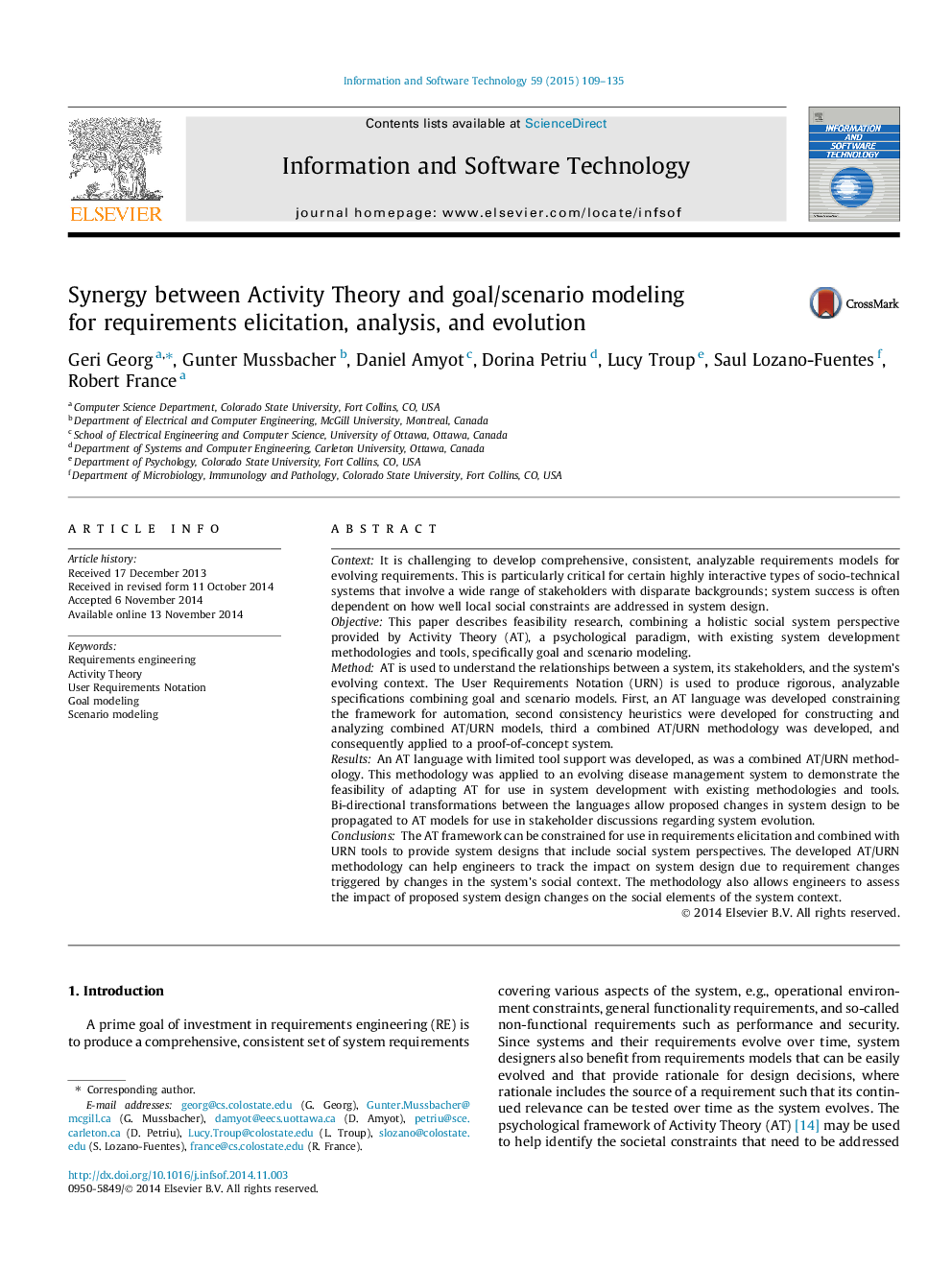| کد مقاله | کد نشریه | سال انتشار | مقاله انگلیسی | نسخه تمام متن |
|---|---|---|---|---|
| 550138 | 1450774 | 2015 | 27 صفحه PDF | دانلود رایگان |
ContextIt is challenging to develop comprehensive, consistent, analyzable requirements models for evolving requirements. This is particularly critical for certain highly interactive types of socio-technical systems that involve a wide range of stakeholders with disparate backgrounds; system success is often dependent on how well local social constraints are addressed in system design.ObjectiveThis paper describes feasibility research, combining a holistic social system perspective provided by Activity Theory (AT), a psychological paradigm, with existing system development methodologies and tools, specifically goal and scenario modeling.MethodAT is used to understand the relationships between a system, its stakeholders, and the system’s evolving context. The User Requirements Notation (URN) is used to produce rigorous, analyzable specifications combining goal and scenario models. First, an AT language was developed constraining the framework for automation, second consistency heuristics were developed for constructing and analyzing combined AT/URN models, third a combined AT/URN methodology was developed, and consequently applied to a proof-of-concept system.ResultsAn AT language with limited tool support was developed, as was a combined AT/URN methodology. This methodology was applied to an evolving disease management system to demonstrate the feasibility of adapting AT for use in system development with existing methodologies and tools. Bi-directional transformations between the languages allow proposed changes in system design to be propagated to AT models for use in stakeholder discussions regarding system evolution.ConclusionsThe AT framework can be constrained for use in requirements elicitation and combined with URN tools to provide system designs that include social system perspectives. The developed AT/URN methodology can help engineers to track the impact on system design due to requirement changes triggered by changes in the system’s social context. The methodology also allows engineers to assess the impact of proposed system design changes on the social elements of the system context.
Journal: Information and Software Technology - Volume 59, March 2015, Pages 109–135
